Review: Asus ZenFone V Live for Verizon Wireless
Dec 11, 2017, 8:15 AM by Eric M. Zeman
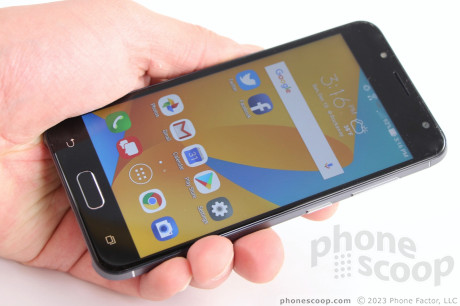
The Asus ZenFone V Live claims to have a unique trick up its sleeve: it can process real-time beautification effects when broadcasting live video to certain social networks. When it's not doing that, the V Live a solid entry-level Android smartphone that has a respectable set of specs keeping things humming under the hood. Here is Phone Scoop's review of the ZenFone V Live for Verizon Wireless.
Is It Your Type?
The Asus ZenFone V Live is one of the most affordable handsets in Verizon's roster of phones. If you're in the market for an inexpensive Android device with a selfie-centric camera experience, the ZenFone V Live just might fit the bill.
Body
Asus dressed the ZenFone V Live in metal and glass. Curved glass adorns the front and the rear is mostly aluminum. The colors are a conservative blend of black, gray, and chrome. The V Live leans towards classy, but some of the accents lend a welcome bit of panache. The phone has a simple shape. The top and bottom corners are nicely rounded, though the sides feature a pronounced ridge.
If you have smaller hands, the V Live will make you happy. For a modern smartphone, the V Live is compact and hand-friendly. At 5.7 inches tall and 2.8 inches wide, It's a bit smaller than the iPhone X and somewhat bigger than an iPhone 8. I found the size appealing when using it over the course of a week. It's a good size for slipping into pockets. The smooth materials ensure retrieving the V Live from your pocket doesn't turn into a fishing expedition.
The materials are fine and the phone is put together well. We're talking about a really inexpensive phone here, so to see metal on any part of the chassis is impressive. The glass face sits in the metal chassis tightly. The plastic end caps on the rear are also fitted to the phone with precision; there are no unsightly gaps or other obvious flaws in the V Live's construction. The metal and glass give the phone weight and gravitas. Nothing about the experience of using this handset comes across as cheap.
Plenty of functional elements will stand out as you gaze at the V Live's face. The user-facing camera and its accompanying LED flash are painfully obvious is the phone's forehead, sort of like zits. A rectangular button is centered below the display and called out with a chrome accent. This is the home key and fingerprint reader. It's rather flat, but I still found it easy to locate and push. The "back" and "app switcher" touch keys flank the home button. They are painted on in chrome, so you can always see them. As for the bezels, Asus did an okay job. Both the forehead and chin are thicker than I care to see, but there are far worse in this price class.
I like that the screen lock and volume toggle controls are covered in chrome. This makes them stand out visually and easier to find in a hurry. The screen lock button is the lower of the two and is rather small. The volume toggle is a bit longer. Travel and feedback is close to perfect for both. I wish one of them had some sort of texture to help my thumb differentiate between them. The SIM tray is located along the left edge of the phone. The same tray also accommodates microSD memory cards.
Side Buttons
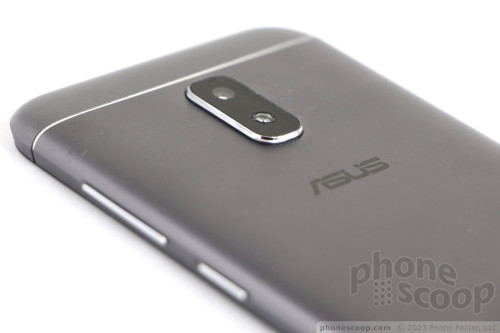
Asus gave the V Live a USB-C port, which is located on the bottom edge. This is notable because most inexpensive (and even some mid-range) new phones still come with the older, inferior microUSB. UCB-C is easier to use and more capable. The phone also includes a 3.5mm headphone jack.
USB-C and 3.5mm
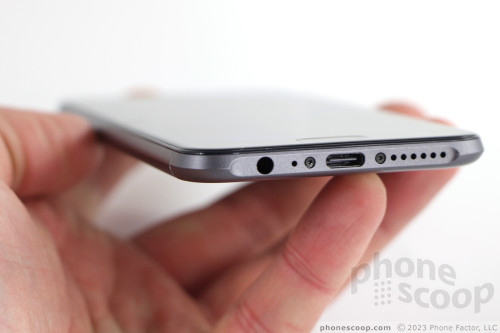
The phone's rear has a lot going on. An aluminum panel forms about 80% of the of the back side. Chrome strips separate the aluminum from plastic end caps. The aluminum has an appealing, smooth gray paint job. The plastic caps have a different shade of gray that makes them stand apart. (Using plastic for the caps allows the antennas' wireless signals to pass through.) The camera/flash array is raised in a fairly big module.
Camera Profile
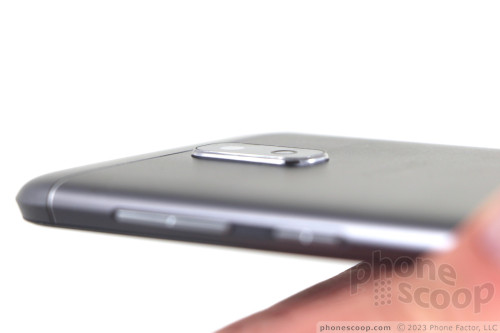
The battery is locked inside. The phone is not water-resistant.
In all, the Asus V Live is a fine little phone. It offers a respectable mix of glass and metal to make it feel far more expensive than it really is.
Rear Panel
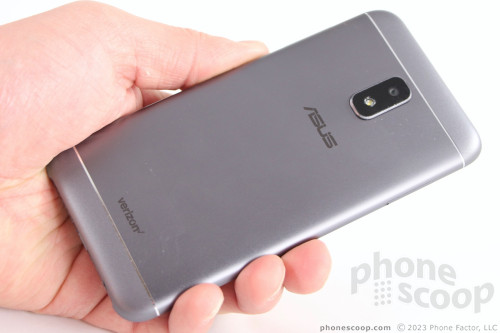
Screen
The V Live's display measures 5 inches across the diagonal and it offers 720p HD resolution. I've seen this combination a lot on entry-level and mid-range handsets and it works well. I personally prefer more pixels, but the combination of size and resolution of the screen leads to a good experience with this phone. Text, pictures, and icons look sharp most of the time. You can only begin to see individual pixels if you hold the phone up close to your eyes. Most of the time they are invisible. The LCD panel puts out a decent amount of light, but I'd like to see more. Outdoor viewing suffers from an unfortunate pairing of reflectivity and weak brightness. Viewing angles are just okay; You won't see any blue shift, but brightness drops off steeply when viewed at a sharp angle.
The phone includes a fairly comprehensive tool for adjusting the screen's basic appearance. For example, you can dial in the color, set up a blue light filter for late-night viewing, select from several brightness profiles, as well as create your own, custom settings. This type of feature is often reserved for flagship devices.
Signal
The ZenFone V Live is sold by Verizon Wireless. As I tested the phone it remained on 4G LTE most of the time. It never dropped Verizon's network completely, though I did see it drop the 4G LTE indicator on several occasions. The phone had no trouble making or maintaining a call over miles of highway driving. Data speeds were far short of the best I've seen. I'd call data performance just acceptable. Streaming media was sometimes a challenge for the V Live; I saw a lot of buffering and low-quality playback.
Sound
I was generally happy with the ZenFone V Live when making phone calls. The earpiece offers clean voices that can be pushed to respectable volumes. Vocal tones sometimes sounded a little robotic. You should be able to enjoy calls with the volume set at about 60% most of the time. You'll need to crank it up all the way in coffee shops, in the car, etc. The speaker doesn't distort too much.
You can activate Verizon's Advanced Calling service if you wish. This will produce HD Voice calls via VoLTE. (It's free to use, so go ahead and activate it.) As long as you and your callee are both on Verizon's LTE 4G network, you'll notice a significant improvement in clarity.
The bottom-mounted speakerphone did an acceptable job. Calls routed to the speaker were not quite as clear or as audible as those managed through the earpiece. Turning the V Live up all the way will resort in some distortion via the speakerphone. You should be able to understand calls in moving cars without issue.
Ringers and alerts always got my attention. The vibrate alert is just barely adequate.
Battery
Asus selected a 3,000mAh battery for the V Live. Thanks (in part) to the medium-resolution screen, the phone is able to get through a full day without struggle. I was able to count on it from breakfast to at least 10pm on most days and often to 11pm or later. That's a good 15-16 hours of mixed usage. When I stepped up use of the camera or played lots of games I noticed the power would drain an hour or two faster. Most people should be able to get all that they need each day without worry.
Asus' power management software is a bit ridiculous. I tested the phone using the normal setting for the battery, but you can switch it to high performance (for gaming), power saving, super saving, and custom. Each mode gives you an estimate of how much standby time is available but not how much actual usage time is available. The power saving and super saving modes nearly double standby time when compared to the normal mode. They do this by aggressively tweaking notifications, radio usage, screen brightness, and so on. If you use the phone in power saving mode all the time you'll easily get 1.5 days of battery life from the phone.
The V Live doesn't support wireless charging.
Bluetooth, GPS, NFC, WiFi
The phone's Bluetooth radio handled certain connections well, but I did run into a few snags. The phone paired easily with headphones and speakers, but not my car's hands-free system. The V Live also struggled to connect to my laptop. Calls completed via Bluetooth headsets were solid, and music routed to Bluetooth speakers was acceptable.
As a navigation tool, the ZenFone V Live performed as well as any other phone on the market. The GPS radio pinpointed me quickly and to within about 25 feet most of the time. It coordinated with Google Maps and worked fine when put to use for voice-guided, point-to-point directions. It was sometimes a little slow.
The ZenFone V Live's WiFi radio did well.
This phone does not have NFC.
Comments
No messages


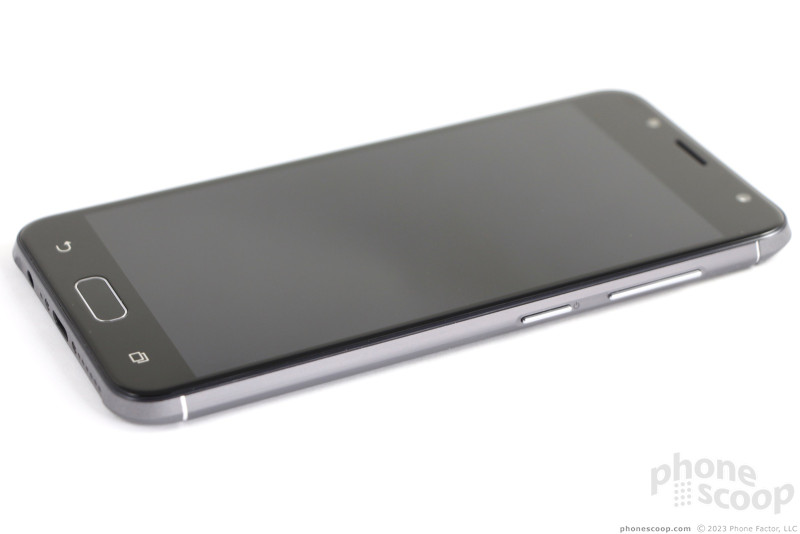




















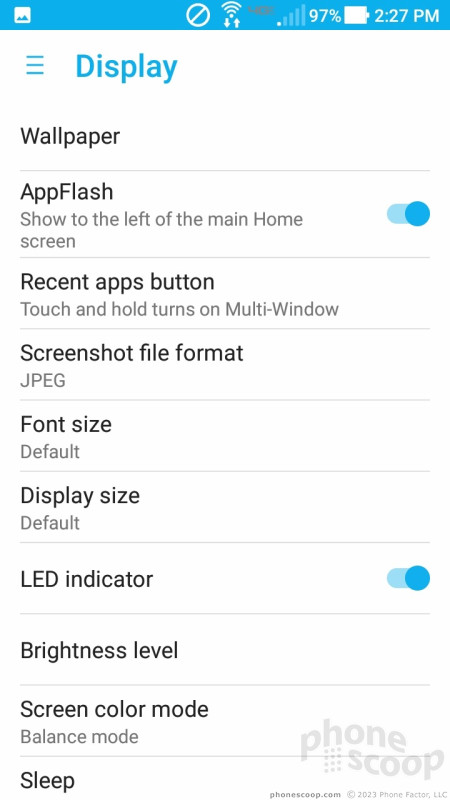





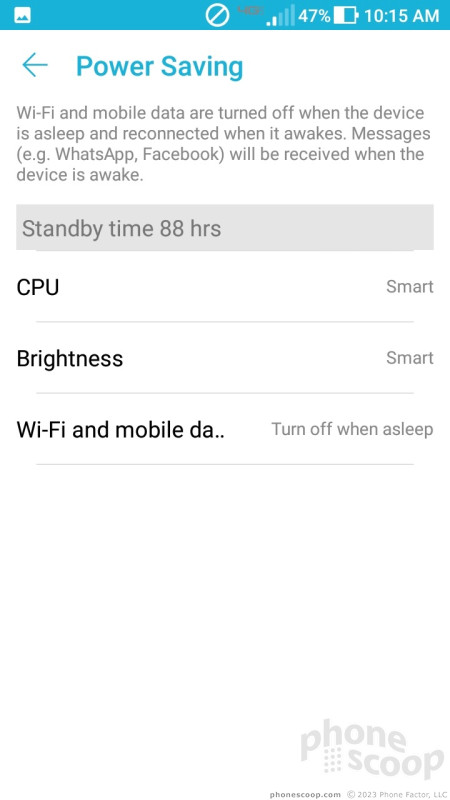







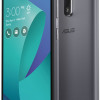 Asus ZenFone V Live Lets You Livestream Zit-Free Video
Asus ZenFone V Live Lets You Livestream Zit-Free Video
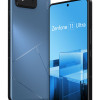 Asus Goes Big with Zenfone 11 Ultra
Asus Goes Big with Zenfone 11 Ultra
 How To Take a Screenshot on an iPhone
How To Take a Screenshot on an iPhone
 How To Take a Screenshot on Android
How To Take a Screenshot on Android
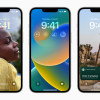 iOS 16 Revamps the Lock Screen
iOS 16 Revamps the Lock Screen
 Asus ZenFone V Live
Asus ZenFone V Live




